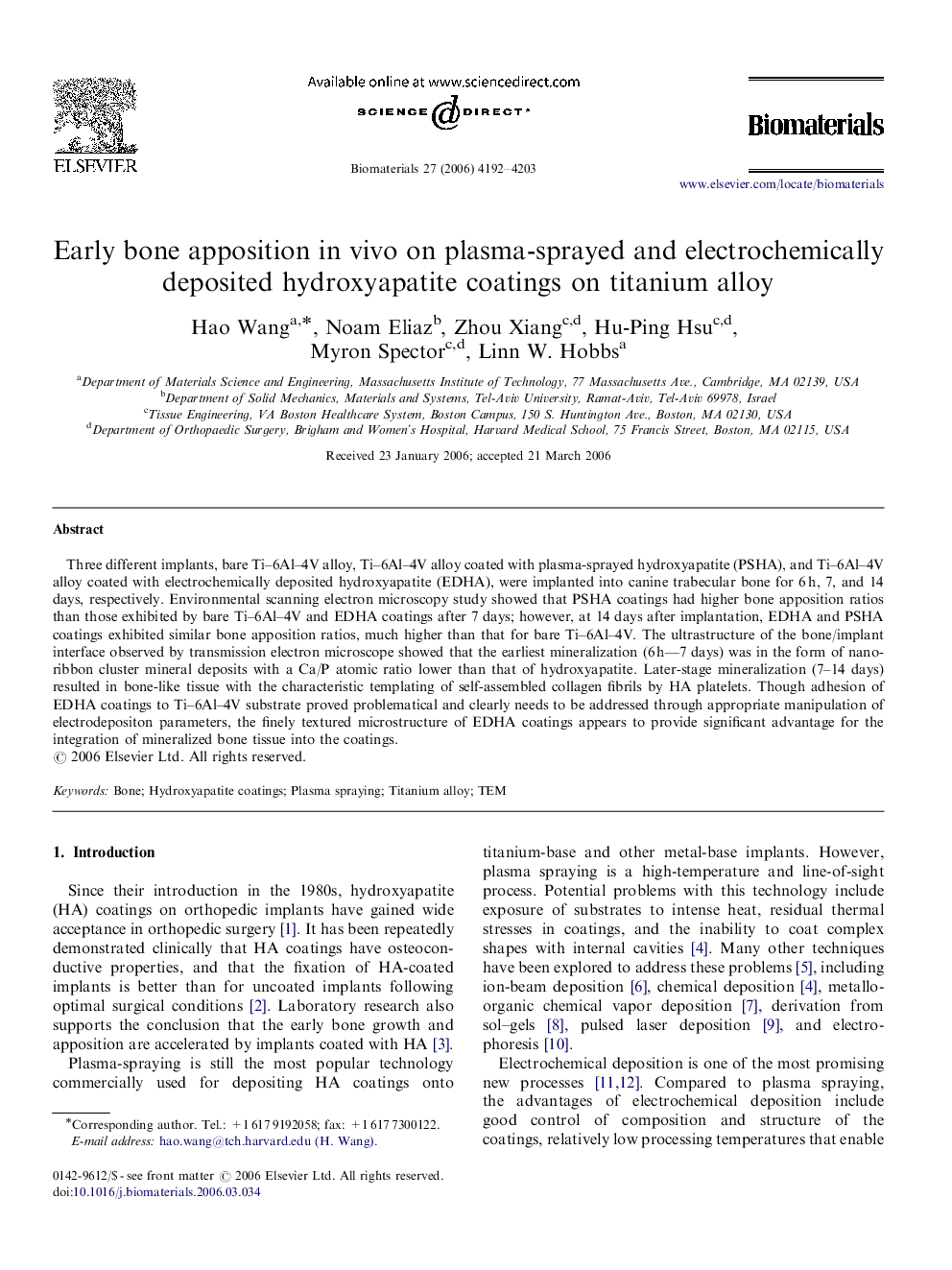| Article ID | Journal | Published Year | Pages | File Type |
|---|---|---|---|---|
| 10230138 | Biomaterials | 2006 | 12 Pages |
Abstract
Three different implants, bare Ti-6Al-4V alloy, Ti-6Al-4V alloy coated with plasma-sprayed hydroxyapatite (PSHA), and Ti-6Al-4V alloy coated with electrochemically deposited hydroxyapatite (EDHA), were implanted into canine trabecular bone for 6Â h, 7, and 14 days, respectively. Environmental scanning electron microscopy study showed that PSHA coatings had higher bone apposition ratios than those exhibited by bare Ti-6Al-4V and EDHA coatings after 7 days; however, at 14 days after implantation, EDHA and PSHA coatings exhibited similar bone apposition ratios, much higher than that for bare Ti-6Al-4V. The ultrastructure of the bone/implant interface observed by transmission electron microscope showed that the earliest mineralization (6Â h-7 days) was in the form of nano-ribbon cluster mineral deposits with a Ca/P atomic ratio lower than that of hydroxyapatite. Later-stage mineralization (7-14 days) resulted in bone-like tissue with the characteristic templating of self-assembled collagen fibrils by HA platelets. Though adhesion of EDHA coatings to Ti-6Al-4V substrate proved problematical and clearly needs to be addressed through appropriate manipulation of electrodepositon parameters, the finely textured microstructure of EDHA coatings appears to provide significant advantage for the integration of mineralized bone tissue into the coatings.
Related Topics
Physical Sciences and Engineering
Chemical Engineering
Bioengineering
Authors
Hao Wang, Noam Eliaz, Zhou Xiang, Hu-Ping Hsu, Myron Spector, Linn W. Hobbs,
